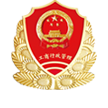 400 867 2009
400 867 2009為了跟緊已經到來的AI時代,我們需要了解哪些人工智能術語呢?
1. Algorithms
The word is derived from the name of the ninth-century Persian mathematician, Muhammad ibn Musa al-Khwarizmi, who introduced decimal numbers to the West. Today it means a series of instructions that must be executed automatically by a computer. Algorithms are at work in all areas, from search-engine queries and the selection of information suggested to internet users, to financial markets.
1. 算法
這個詞源于公元九世紀波斯數學家阿爾·花剌子模的名字,是他把十進制數字引入西方。 這里的算法是指必須由計算機自動執行的一系列指令。從搜索引擎查詢、向互聯網用戶推薦信息,再到金融市場,算法活躍在各個領域。人工生命這是一個跨學科研究領域,旨在以計算機或機器人的形式研發受生命系統啟發的人工系統。增強人類這是超人類主義的理想,按照科學技術原則對人體進行干預,而個體在接受改造之后,各項機能都可以得到強化,這一過程為增強人類。兼具人與機器屬性的個體能夠跑得更快,在黑暗中也能看得清楚,可以忍受疼痛,具備更高的智力,能夠抵抗疾病或死亡。“被修復的人”已經出現,“連接計算機”的假肢也日趨完善。隨著用于軍事目的的人造外部骨骼設備的發展,增強人類正在逐漸成為現實。
2. Augmented reality
The superimposition of virtual elements onto reality, calculated by a computer system in real time (such as sounds, 2D and 3D video images, etc.). This technique is used in video games and cinema, where the spectator interacts with virtual objects through sensors. It is also used for geolocation and heritage applications. For instance, the Cluny Abbey in France uses augmented reality screens, so visitors can visualize the town as it was in the fifteenth century.
2. 增強現實
增強現實是指由計算機系統實時計算形成的虛擬元素與現實的疊加(如聲音、二維和三維視頻圖像等)。這種技術應用于視頻游戲和電影,觀眾可通過傳感器與虛擬物體進行互動,同時也應用于地理定位和遺產方面。例如,法國的克呂尼修道院采用增強現實屏幕,為游客展示 15 世紀古鎮風貌。
3. Big data
A set of digital data that, through its volume, surpasses human intuition and analytical abilities. We generate some 2.5 trillion bytes of data every day on the internet, through emails, videos, weather information, GPS signals, online transactions, etc. No traditional computerized database management tool can process this mass of data – it has required the development of new algorithms to store, classify and analyse it.
3. 大數據
大數據是指一系列人類的直觀理解和分析能力已無法企及的、體量巨大的數字數據。我們的電子郵件、視頻、天氣信息、全球衛星定位信號和在線交易等,每天會在互聯網上生成大約2.5 萬億字節數據。任何一種傳統的計算機數據庫管理工具都無法處理如此海量的數據,因而需要開發新的算法對其進行存儲、分析和分類。
4. Bioconservative
For transhumanists, people who criticize their ideal, augmented man are bioconservatives – regressive individuals who refuse to change the laws of life and nature, even though technology makes it possible to do so.
4. 生物保守派
超人類主義者認為,對于增強人類理想持批評態度的人就是生物保守派,是即便技術已經成熟,依然拒絕改變生命法則和自然規律的倒退者。
5. Cloud
Different computer systems involving a large number of computers connected to each other, and exchanging messages in real time over the internet. A calculation or the storage of information launched by one computer can therefore be carried out by a network of interconnected computers – thus creating a cloud.
5. 云
多個計算機系統,包含大量互相連接的計算機,并通過互聯網實時交換信息。在一臺計算機上啟動的計算或信息存儲可以通過聯機網絡來實現,從而創建一個云。
6. Deep learning
At the cutting edge of machine learning, this technique enables a machine to independently recognize complex concepts such as faces, human bodies, or images of cats. This is done by scouring millions of images picked from the internet – images that have not been labelled by humans. The result of a combination of learning algorithms and formal neural networks and the use of mass data, deep learning has revolutionized artificial intelligence. It has countless applications, including search engines, medical diagnosis, autonomous cars, etc. In 2015, the AlphaGo computer used deep learning to beat humans at Go, the ancient Chinese board game.
6. 深度學習
這是最尖端的機器學習技術,讓機器能夠獨立識別復雜概念,如臉部、人體或貓的圖像。要完成深度學習,需要瀏覽從互聯網上選出的數百萬張不帶有人為標記的圖像。深度學習將算法的學習與形式神經網絡結合起來, 同時采用大量數據,徹底改變了人工智能。深度學習廣泛應用于搜索引擎、醫療診斷、自動駕駛汽車等領域。2015 年,AlphaGo 程序利用深度學習,在圍棋比賽中擊敗了人類棋手。
7. Formal neural networks
These are algorithms designed to be implemented by a computer, which aims to replicate the neural connections of the brain. Existing systems are much more limited than human intelligence. But they are still capable of estimating the speed of a vehicle according to movements of the accelerator pedal and the slope of the road; the hardness of a material as a function of its chemical composition and its processing temperature; or the solvency of a business according to its turnover, etc.
7. 形式神經網絡
這些算法由計算機執行,旨在復制大腦的神經連接。現有系統雖遠遠落后于人類的智力,但能夠根據油門的運動和道路的坡度來估算車輛時速,根據材料的化學成分和加工溫度計算其硬度,還能夠根據營業額推算公司的償付能力。
8. Human cryogenics
The technique for the conservation of a human body or head in liquid nitrogen, after an individual’s death, with the aim of resuscitating it one day.
8. 人體冷凍技術
在人死后利用液氮保存人體或頭部的技術,目的是有朝一日使其復蘇。
| 杭州翻譯公司,杭州翻譯公司哪個好,杭州翻譯公司收費標準 | ||||
| 浙公網安備 33010802003197號 浙ICP備15039916號 |
||||
 |
 |
 |
||